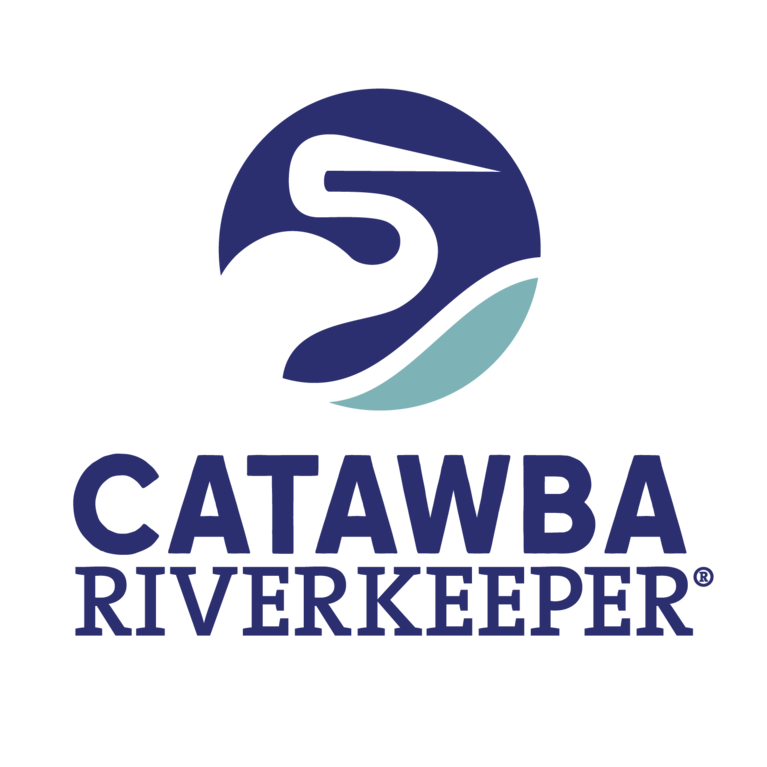Catawba Riverkeeper
Restoration
All Things Restorative: Current Projects
Shoreline & Streambank Stabilization
The goal of this project is to empower residents of the Catawba-Wateree River Basin and other concerned individuals to become “community scientists” involved in stabilizing sections of streambanks and lake shorelines to reduce erosion. Our objective is to increase understanding among residents about the significance of native plants, their root systems, and how enhancing habitats for local species contributes to the overall health of the water. We aim to educate and mobilize volunteers to undertake stabilization and habitat enhancement efforts across public, private, and government owned lands.
Volunteer Opportunities
If you would like to help with our current shoreline stabilization projects, please sign up for one of the volunteer opportunities listed below. More information can be found by clicking on the event.
- To Be Announced
Watch the video above to learn about live staking on Lake Wateree.
Spider Lily Propagation
The Rocky Shoals Spider Lily project aims to establish a population of this native plant in the reestablished habitat on the Long Reach Bypass (LRB) of the Great Falls project. The LRB below the Fishing Creek Dam, previously devoid of an aquatic ecosystem due to being dewatered for over a century, experienced a change in its status during a recent relicensing. This alteration mandated a minimum daily flow from the dam into the channel adjacent to a newly constructed switchback whitewater recreation channel.
Comprised of mostly rocky sublayers with constantly flowing water, this habitat is perfect for the Rocky Shoals Spider Lily. Interestingly, there are only two known nearby populations of this species. The largest population in the world exists approximately 14 miles upstream at Landsford Canal State Park, with another small population downstream where water from Stumpy Pond reaches the shoals.
In collaboration with experienced professionals, our initiative involves propagating this plant in new locations.
The project includes the implementation of autonomous sensing technology for regular data collection, allowing continuous monitoring of conditions vital for the spider lilies, which are highly sensitive to changes in dissolved oxygen and drying out. This plant typically blooms from May to June and produces seed pods at the end of June to July. This is when we will work with Clemson University and volunteers to collect and transport the seeds to the Great Falls. This process will be repeated on multiple field days to maximize success and minimize potential harm to the existing lily population.
Beyond their environmental significance, Rocky Shoals Spider holds social, cultural, and economic value, as evident in the population at
Landsford Canal State Park. Both residents and tourists can engage with this unique species of lily, allowing Catawba Riverkeeper to educate about the importance of the native plant species and their contributions to local native wildlife.
Volunteer Opportunities
If you would like to help with our Spider Lily Propagation Project, please sign up for one of the volunteer opportunities listed below. More information can be found by clicking on the date.
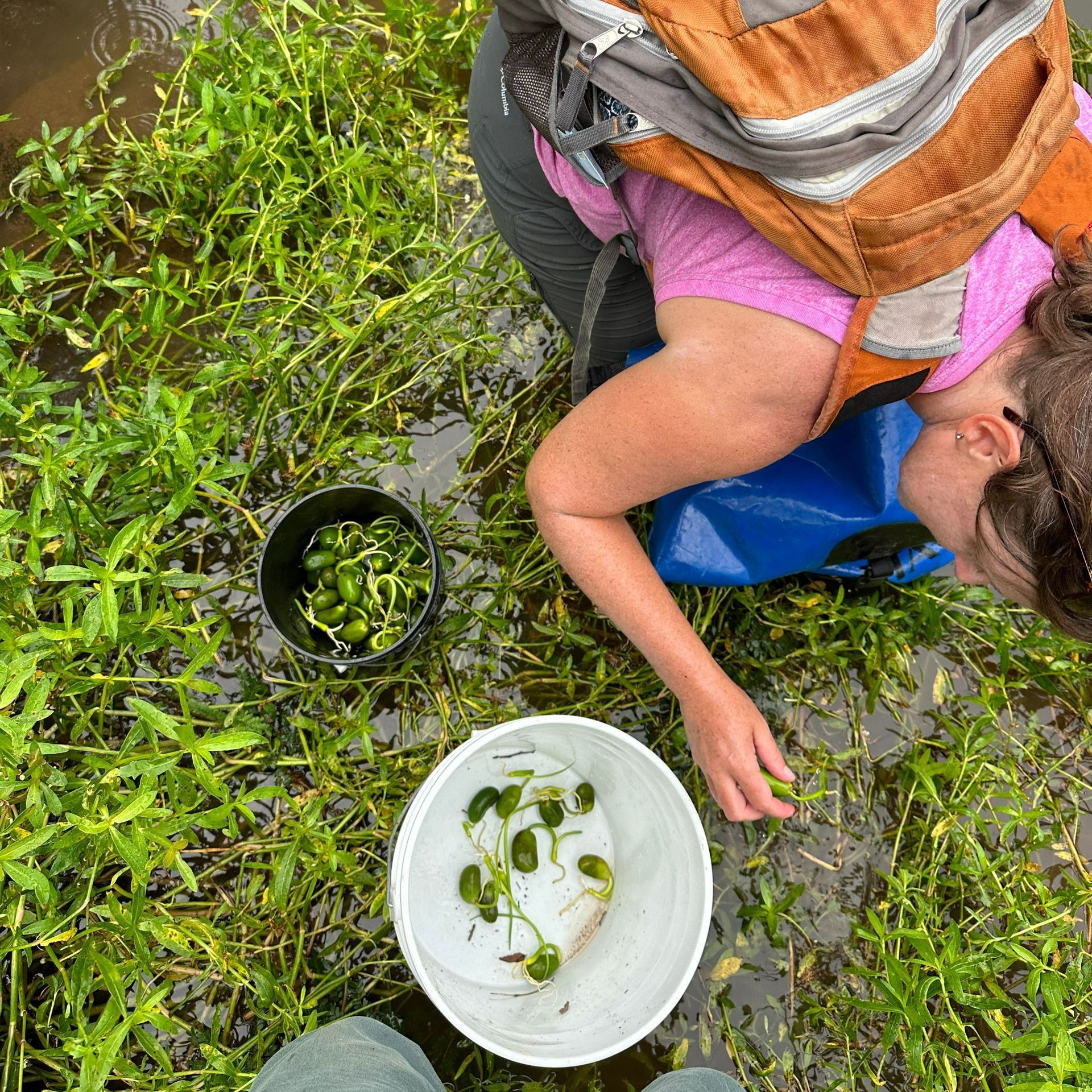
The team harvests Spider Lily seed pods then transplants them at Great Falls as part of the pilot program in summer 2023.
Beaver Dam Analogs
Beavers have proven to play a significant role in the health of our river systems with dams being known to contribute to slowing down water runoff, increasing ground water infiltration, acting as a natural water filter, and reducing bank erosion and sedimentation. Emerging research from out West involving creating “fake” beaver dams has allowed beavers to recolonize streams, bringing along benefits such as these. After extensive research, our Northern Basin Manager had to ask, will this work in the Southeast? In an effort to answer that question, we’ve piloted one of only a few Beaver Dam Analog (BDA) projects in the entire Southeast!
In March of 2023, a group of intrepid Beaver-wannabe volunteers ventured to a Foothills Conservancy property in Morganton, NC to construct 7 BDAs. These structures have been consistently monitored since installation and we’re thrilled to report that despite high flows from summer rainstorms and the lack of rainfall in the fall, all but 1 remain intact!
Ongoing studies are investigating the impact BDAs have on water quality, fish, macroinvertebrates, amphibians, and most importantly sediment. While we’re awaiting more comprehensive data, we’re pleased to announce that these BDAs have effectively trapped and stored sediment, preventing its downstream transport. In doing so, they’ve contributed to raising the streambed level bringing it closer to a healthier state, allowing it access to its natural floodplain. Furthermore, these structures have significantly diminished the stream’s erosive force.
While there are no active signs of beavers, game cameras have revealed that the dams are popular spots for racoons and various small mammals. We will continue to monitor these structures and rebuild them as necessary to ensure a successful stream restoration.
Thank you everyone who has helped make this project successful. This endeavor serves as a cornerstone for future restoration efforts using BDAs!
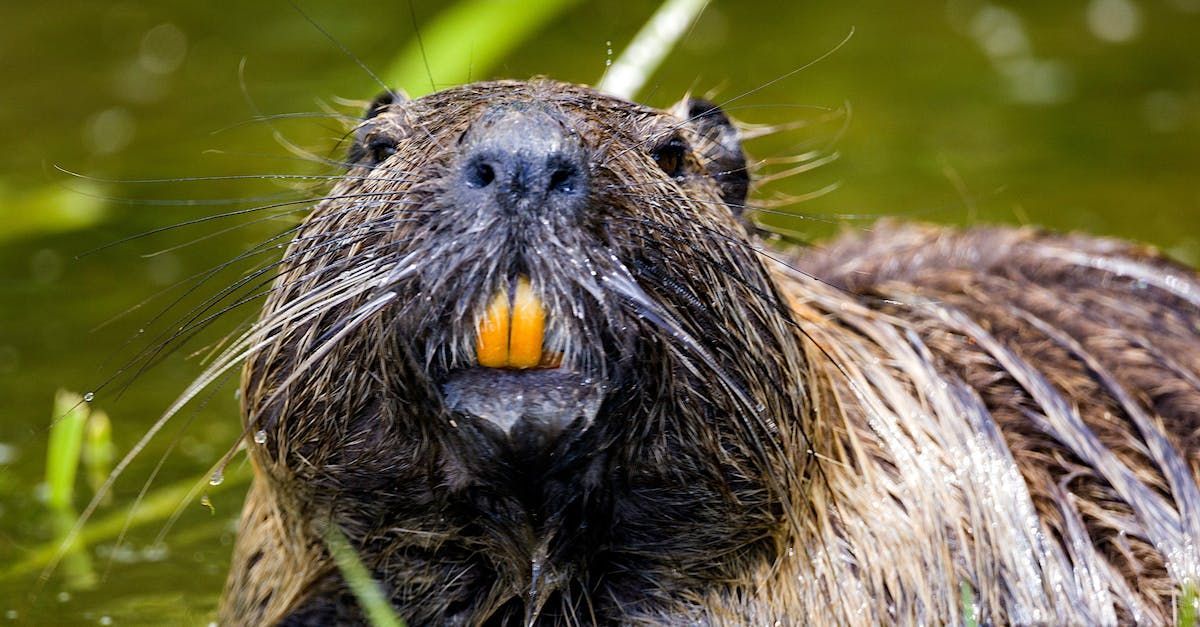
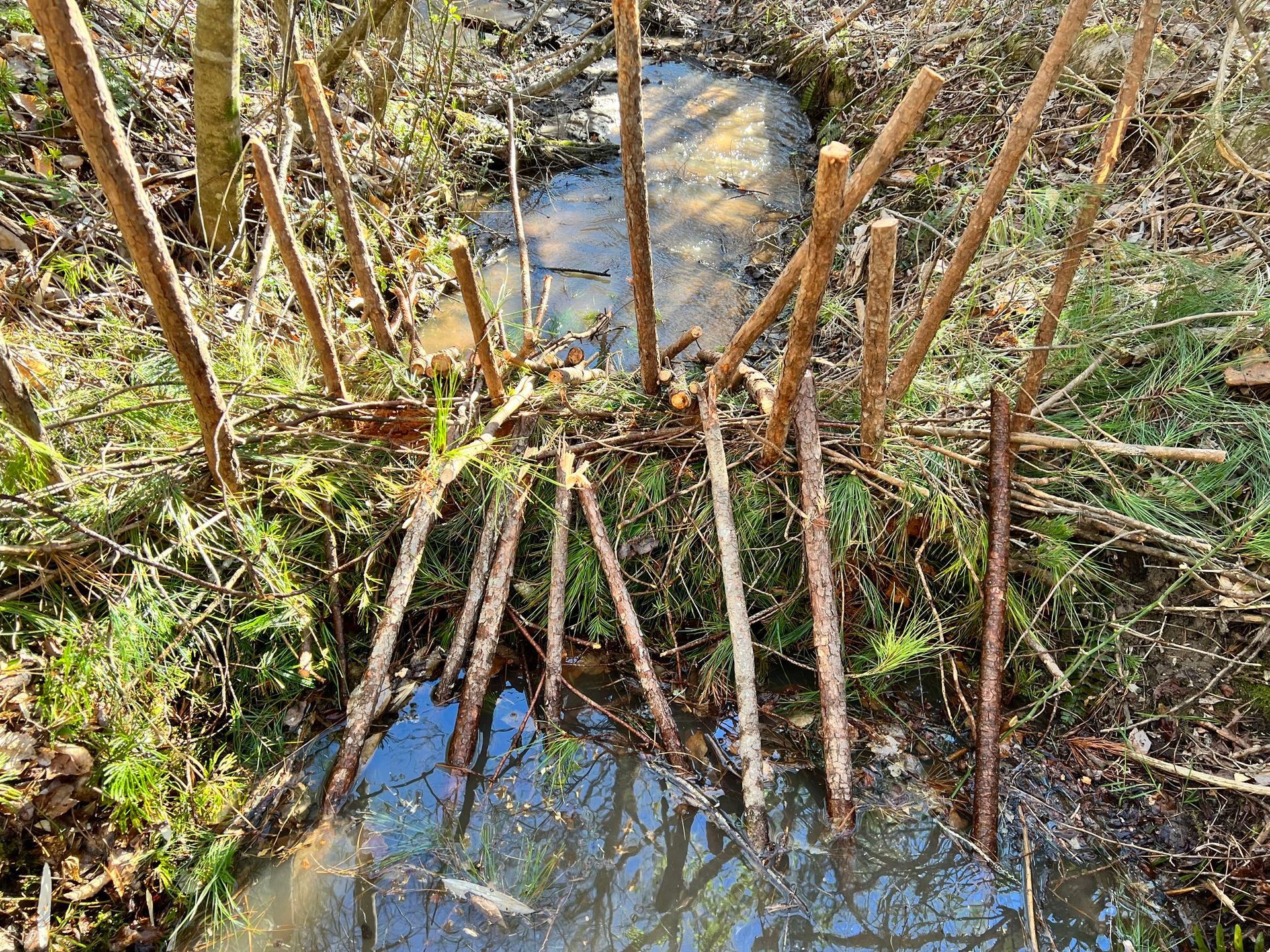
A Beaver Dam Analog constructed in 2023 in Morganton, NC as part of our pilot program.
Invasive Species Mitigation
The objective of this project is to reduce the existing populations of the invasive aquatic plant, Aligatorweed. Native to South America, it first began to threaten ecosystems in the Southeast in the early 1900’s. Floating groups of this invasive plant can impede navigation and block water intakes and shoreline facilities, while rooted sections can increase sedimentation, reduce sunlight penetration, impact recreational uses, and reduce species diversity in a body of water. We have been working to promote habitat enhancement for fish and wildlife through the cessation of this invasive plant and the establishment of native aquatic plants.
The main way in which we are striving to achieve our goal is through establishing a source population of the natural enemy of Alligatorweed, the Alligatorweed Thrips. Thrips must be transplanted from one location to another, once there they will eat the Alligatorweed, decimating its population. The problem with these little bugs is that they do not fly or swim. The only way to get from grouping to grouping of this invasive plant is by transplanting them each time. While Thrips are cold tolerant, they are susceptible to predation from a variety of sources. This makes growing a sustainable population in the natural environment difficult. This year we are attempting a new path; we hope to grow these little bugs inside in a hydroponic habitat. If this is successful, our next steps will be to rely on volunteers trained by our team of scientists to transplant the Thrips and document their progress.
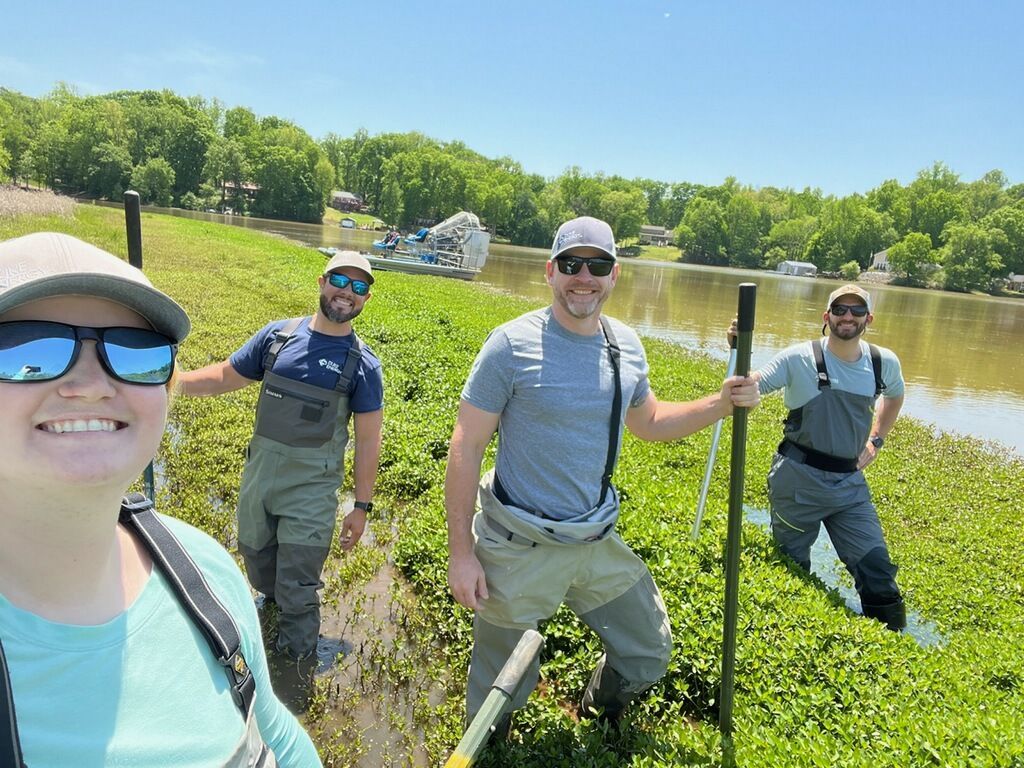
Duke Energy and Catawba Riverkeeper surveying alligatorweed in upper Lake Wylie in April 2022.
Stay tuned for updates on this program throughout the year!
Catawba Riverkeeper Outdoor Classroom "Re-Nativization"
The goal of the “re-nativization” project is to restore the 2.5-acre Outdoor Classroom in Fort Lawn, SC to its original native prairie landscape, while also establishing a safe and ethical way for visitors to explore the property. This comprehensive project involves several stages, including clearing the existing vegetation, replanting with native species, eradicating invasive plants from the wooded areas, and eventually constructing a boardwalk to preserve the ecosystem while enabling visitors to appreciate the native environment.
We aim to organize multiple volunteer workdays to eliminate the invasive plants that have overrun the property and replace them with native species. This approach is crucial for maintaining the environment and preserving the Catawba River’s quality and quantity in the area. Once this is complete, the subsequent phase involves building a protective boardwalk, which will safeguard these plants while offering the community a secure space to engage with and learn from the environment. However, this final stage awaits funding or the donation of necessary materials and labor.
Video: Prescribed burn in February 2024. First step to restoring the area to a natural prairie.
How We Choose Restoration Projects
Each Sub-Basin has its own ecological, geographic, and urban footprint that creates challenges that afflict each watershed differently. Therefore, each Watershed Manager spends time determining what challenges their basin faces and comes up with a distinct plan for restoration.
Restoration can take on many forms, from live staking and invasive species removal, to beaver dams and improving water quality.
Funding for our restoration projects comes from grants first and foremost and is otherwise subsidized by donations. We have and will continue to plan a variety of restoration projects whose completion and success are only possible with the help of volunteers across the Basin!
Questions?
If you have questions or are interested in supporting our mission through volunteerism or community science, contact Volunteer & Community Science Manager Kaity D’Angelo at Kaity.d@catawbariverkeeper.org.
Support Our Foundation
Let's protect the Catawba River!
The Catawba Riverkeeper Foundation is working towards clean, plentiful water now and for generations to come.





